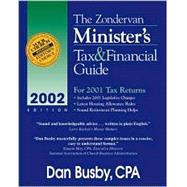| Recent Developments | 1 | (8) | |||
| Form 1040 Line by Line | 9 | (6) | |||
|
15 | (14) | |||
|
16 | (2) | |||
|
18 | (1) | |||
|
18 | (2) | |||
|
20 | (2) | |||
|
22 | (1) | |||
|
23 | (1) | |||
|
23 | (3) | |||
|
26 | (1) | |||
|
27 | (1) | |||
|
28 | (1) | |||
|
29 | (8) | |||
|
30 | (1) | |||
|
30 | (3) | |||
|
33 | (1) | |||
|
34 | (2) | |||
|
36 | (1) | |||
|
37 | (22) | |||
|
37 | (1) | |||
|
38 | (1) | |||
|
39 | (17) | |||
|
56 | (3) | |||
|
59 | (8) | |||
|
60 | (3) | |||
|
63 | (1) | |||
|
64 | (3) | |||
|
67 | (18) | |||
|
69 | (2) | |||
|
71 | (6) | |||
|
77 | (1) | |||
|
77 | (2) | |||
|
79 | (3) | |||
|
82 | (3) | |||
|
85 | (22) | |||
|
85 | (3) | |||
|
88 | (1) | |||
|
89 | (4) | |||
|
93 | (6) | |||
|
99 | (2) | |||
|
101 | (4) | |||
|
105 | (2) | |||
|
107 | (12) | |||
|
108 | (1) | |||
|
109 | (2) | |||
|
111 | (1) | |||
|
111 | (1) | |||
|
111 | (4) | |||
|
115 | (2) | |||
|
117 | (1) | |||
|
118 | (1) | |||
|
119 | (12) | |||
|
119 | (1) | |||
|
120 | (3) | |||
|
123 | (1) | |||
|
123 | (1) | |||
|
123 | (3) | |||
|
126 | (1) | |||
|
126 | (1) | |||
|
127 | (4) | |||
| Sample Returns | 131 | (27) | |||
|
133 | (10) | |||
|
143 | (15) | |||
| Citations | 158 | (8) | |||
| Index | 166 | (4) | |||
| 10 Biggest Tax Mistakes Made by Ministers | 170 |








